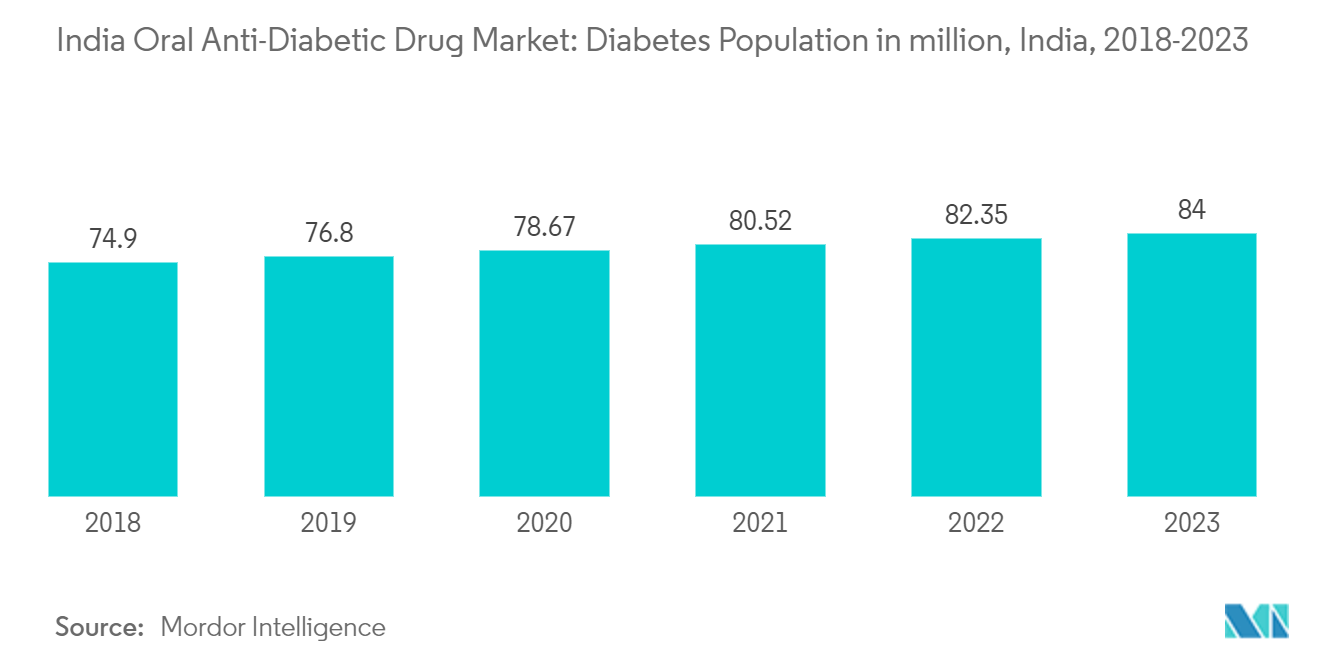Market Trends of India Oral Anti-Diabetic Drug Industry
Sodium-glucose Cotransport-2 (SGLT-2) inhibitor Segment Occupied the Highest Market Share in India Oral Anti-Diabetic Drugs Market in current year
In terms of revenue, the Sodium-glucose cotransport -2 (SGLT-2) inhibitor segment is anticipated to lead the India Oral Anti-Diabetic Drugs Market and post a CAGR of over 11% during the course of the forecast year.
Type 2 diabetes is treated using a group of drugs called Sodium-glucose cotransport -2 (SGLT-2) inhibitors, some of which have also been approved to treat obesity. One of its benefits is that they are less likely to cause hypoglycemia than more traditional insulin secretagogues like sulfonylureas or meglitinides. In addition to significantly lowering blood sugar, SGLT2As have significant effects on the makeup of gut bacteria, lung protection, and inflammation.
The National Health Program is divided into basic aid tiers, each of which can be specifically defined in a given place. The National Health Program is structured according to LEAs. The LEAs specify all medical assistance programs offered by the INHS to citizens, with or without a patient's income-based partial contribution.
Diabetes, a serious health disease, is one of the main issues Italian healthcare institutions are currently confronting. The progression of the disease, its rising prevalence, and the need for more treatment choices for diabetes patients have sparked the creation of novel drugs. The launch of various new products, developing international research collaborations for technical improvement, and increasing public awareness of diabetes are some of the potential opportunities for enterprises in the Indian diabetes pharmaceutical market.

Increasing Diabetes Population in India is driving the market.
Diabetes, a long-term condition, is a silent killer. Several medical professionals cautioned that patients with comorbid conditions are particularly vulnerable to the virus during the initial COVID-19 wave last year. Diabetes mellitus, generally known as diabetes, is a metabolic condition characterized by high blood sugar levels. A complete lack of insulin results in type 1 diabetes, also known as insulin-dependent diabetes mellitus.
With type 2 diabetes mellitus, the body either produces insufficient amounts of insulin or is unable to use the insulin that is produced. According to some, type 2 diabetes is a lifestyle condition. Sugary treats are a hallmark of Indian culture and are consumed during many religious festivals and old customs. It is therefore anticipated to drive the category expansion during the forecast period because of the aforementioned factors.
Unfortunately, with more patients being added each year, India has become the world's diabetes capital. This is a key source of concern for the Center as well as adding to the growing cost of healthcare on the Indian economy. The government is aware of this and appears to be acting to combat it by lowering the price of a few recently released diabetes medications. Pharma companies are also recognizing a new development opportunity by developing novel medications and therapeutic fusions.


